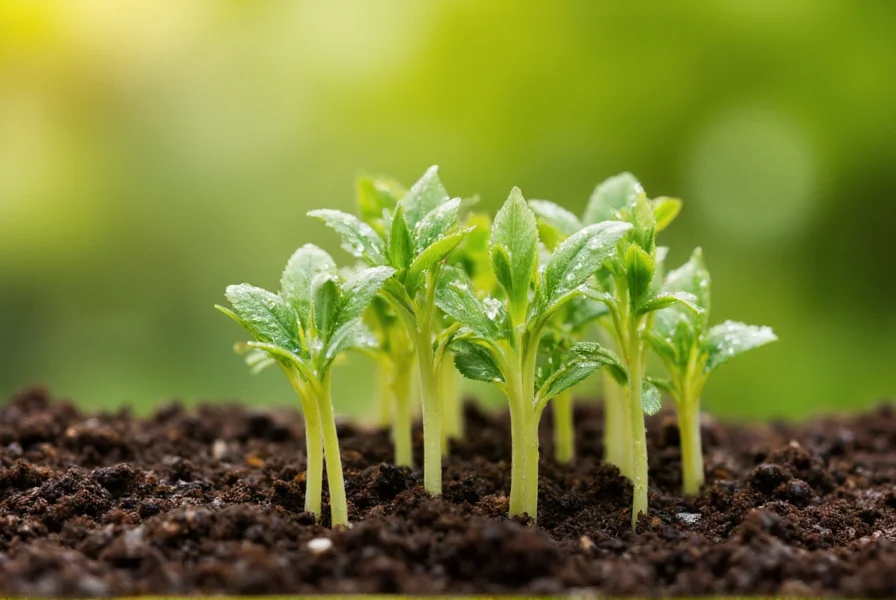Understanding petersilie goes beyond simply recognizing it as the German term for parsley. This herb has deep cultural roots in European cooking traditions and offers remarkable versatility in the kitchen. Whether you're exploring authentic German recipes or seeking to enhance your culinary repertoire, petersilie provides distinctive flavor profiles that elevate countless dishes.
Types of Petersilie and Their Characteristics
Two primary varieties of petersilie dominate European kitchens. Curly petersilie (Petroselinum crispum var. crispum) features tightly curled, bright green leaves with a milder flavor profile. Flat-leaf petersilie (Petroselinum crispum var. neapolitanum), sometimes called Italian petersilie, has broader, flatter leaves and delivers a more robust, earthy flavor that holds up better during cooking.
| Type | Flavor Profile | Best Culinary Uses | Storage Duration |
|---|---|---|---|
| Curly Petersilie | Mild, delicate | Garnishes, finishing touches | 1-2 weeks refrigerated |
| Flat-Leaf Petersilie | Robust, earthy | Cooking, sauces, marinades | 2-3 weeks refrigerated |
Culinary Applications of Petersilie in German Cuisine
German cooks incorporate petersilie into numerous traditional preparations. The herb forms part of the essential "Suppengrün" (soup vegetables) along with carrots and celery, creating the flavor foundation for broths and stews. In "Grüne Soße" (green sauce), petersilie combines with seven different herbs to create Frankfurt's signature condiment. Many German potato salads feature freshly chopped petersilie, which adds brightness to the vinegar-based dressing.
When using petersilie in cooking, add it toward the end of preparation to preserve its fresh flavor and vibrant color. The stems contain concentrated flavor and work wonderfully when finely chopped into sauces or compound butters. For authentic German recipes with petersilie, consider preparing "Kartoffelsalat mit petersilie" or incorporating it into meatloaf mixtures for enhanced moisture and flavor.
Nutritional Benefits and Health Properties
Petersilie delivers impressive nutritional value beyond its culinary applications. Just one-quarter cup provides more than the recommended daily intake of vitamin K, essential for blood clotting and bone health. It's also rich in vitamin C, iron, and antioxidants like flavonoids and carotenoids. The herb contains apiol and myristicin, compounds studied for their potential anti-inflammatory properties.
Unlike many herbs that lose nutritional value when dried, petersilie maintains significant nutrient density even when preserved. However, fresh petersilie always offers superior flavor and higher vitamin content. When exploring the nutritional benefits of petersilie, remember that its vitamin C content supports iron absorption from plant-based foods, making it particularly valuable in vegetarian German dishes.
Growing Petersilie Successfully at Home
Cultivating petersilie requires patience, as the seeds can take 3-4 weeks to germinate. Plant seeds directly in well-draining soil after the last frost, spacing them 6-8 inches apart in partial to full sun. The herb prefers consistent moisture but dislikes waterlogged conditions. For optimal growth, maintain soil pH between 6.0-7.0 and apply organic fertilizer every 4-6 weeks.
When growing petersilie in containers, choose pots at least 8 inches deep with adequate drainage. Harvest leaves from the outer portions first, allowing the center growth to continue. The best time to harvest petersilie is in the morning when essential oils are most concentrated. For gardeners wondering how to grow petersilie successfully, remember that the herb thrives in cooler temperatures and may bolt in extreme heat.
Proper Storage and Preservation Techniques
To extend the shelf life of fresh petersilie, treat it like cut flowers. Trim the stems and place them in a glass with an inch of water, covering loosely with a plastic bag. Store in the refrigerator for up to two weeks. For longer preservation, freeze chopped petersilie in ice cube trays with water or olive oil. Alternatively, dry petersilie by hanging small bunches upside down in a dark, well-ventilated space.
When storing petersilie, avoid washing it until ready to use, as excess moisture accelerates spoilage. For gardeners with abundant harvests, consider making petersilie pesto or herb-infused oils that capture the fresh flavor for months. Understanding proper storage techniques ensures you'll always have this essential herb available for traditional German recipes with petersilie.
Common Substitutions and Flavor Pairings
When petersilie isn't available, cilantro offers the closest flavor profile, though with a more citrusy note. Chervil provides a similar mild anise flavor but is less common. For cooked dishes, celery leaves or a combination of basil and mint can work in a pinch. However, nothing replicates petersilie's unique balance of grassy and peppery notes that define so many German culinary traditions.
Petersilie pairs beautifully with lemon, garlic, butter, and vinegar-based dressings. It complements fish, poultry, eggs, potatoes, and root vegetables exceptionally well. In German cooking, petersilie frequently appears alongside dill, chives, and chervil in herb blends. When experimenting with flavor combinations, remember that petersilie's versatility makes it suitable for both delicate and robust dishes.

Conclusion: Embracing Petersilie in Your Culinary Journey
Mastering the use of petersilie unlocks authentic flavors in German and European cuisine. This humble herb transforms simple ingredients into memorable dishes through its distinctive flavor and vibrant appearance. Whether you're growing petersilie in your garden, purchasing it from the market, or incorporating it into traditional recipes, understanding its characteristics ensures optimal culinary results. The next time you encounter a recipe calling for petersilie, appreciate this essential herb's role in German culinary heritage and its remarkable ability to elevate everyday cooking.
Frequently Asked Questions
What is the difference between petersilie and regular parsley?
There is no difference—petersilie is simply the German word for parsley. The term refers to the same herb (Petroselinum crispum) known as parsley in English. German cuisine primarily uses both curly and flat-leaf varieties, with flat-leaf petersilie being preferred for cooking due to its stronger flavor.
Can I substitute cilantro for petersilie in German recipes?
While cilantro can work as a substitute in some applications, it has a distinctly different flavor profile with citrus notes that aren't traditional in German cuisine. For authentic results, flat-leaf parsley remains the best option. If substituting is necessary, use slightly less cilantro than the recipe calls for petersilie, as its flavor is more potent.
How do I grow petersilie successfully in a home garden?
Plant petersilie seeds directly in well-draining soil after the last frost, as they don't transplant well. Maintain consistent moisture and provide partial to full sun. The seeds germinate slowly (3-4 weeks), so be patient. Harvest outer leaves first to encourage continued growth. Petersilie thrives in cooler temperatures and may bolt in extreme heat, so consider providing afternoon shade in warmer climates.
What are the nutritional benefits of petersilie compared to other herbs?
Petersilie stands out for its exceptional vitamin K content (providing over 100% of daily needs in a small serving), significant vitamin C, and iron. It contains higher concentrations of certain antioxidants than many common herbs. Unlike some herbs that lose nutritional value when dried, petersilie maintains considerable nutrient density even when preserved, though fresh petersilie offers superior vitamin content.
How should I store fresh petersilie to maximize its shelf life?
Treat fresh petersilie like cut flowers: trim the stems and place in a glass with an inch of water, covering loosely with a plastic bag. Store in the refrigerator for up to two weeks. Avoid washing until ready to use, as excess moisture accelerates spoilage. For longer preservation, freeze chopped petersilie in ice cube trays with water or olive oil, or dry it by hanging small bunches upside down in a dark, well-ventilated space.











 浙公网安备
33010002000092号
浙公网安备
33010002000092号 浙B2-20120091-4
浙B2-20120091-4